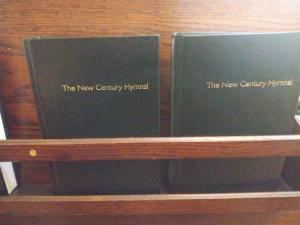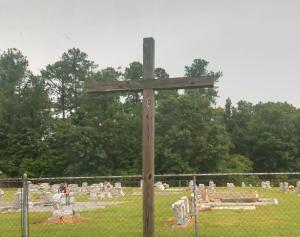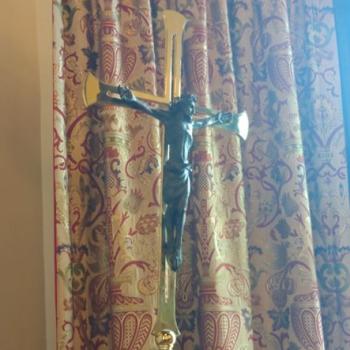
“The church,” one old saying alleges, “thinks in centuries.” This is the mantra that attempts to explain the rate of change within Catholicism.
To many modern people, it seems the only centuries the Roman Catholic Church is capable of thinking in are previous ones. To students of the reformation, the church is as “medieval” as the day Luther posted his 95 theses on the door in Wittenberg. To progressive Catholics, the church is chasing the grandeur of the Renaissance and unable to leave behind the Counter-Reformation mentality. To traditionalist reconstructionists, the present church married the spirit of the 1960s and is now the widow of that era, with only a trove of tacky acoustic songs and felt banners and some new “hippie-sounding” prayers to show for her marital devotion.
The church, many people agree, is stuck in the past. That is a far cry from the forward-looking wisdom implied by “thinking in centuries.”
Well, there will plenty more to come about sociological implications and the loaded history of the claim that someone can be “stuck in the past,” and plenty more explanation of why this column has taken the name Thinking in Centuries in future essays, but for now I want to deal with what the saying really means for those who might be confused at the foresight it ascribes to a church that seems to many to be stuck in the mud, with recalcitrant, reactionary old men at the helm not allowing it to budge.
The Catholic Church does not have, built into itself, the mechanisms of easy change. It is not democratic. It was not designed to adapt itself easily to the needs or desires of successive generations. This is not a bug; it is a feature. It is a defense mechanism. The will of the majority does not dictate truth. The spirit of the age does not automatically override the wisdom of the ages. Human progress is not a straight upward climb, and one generation can just as easily be mistaken as the previous one. Because absolute truth cannot change, then once the church has said something, it cannot easily unsay it.
When people want to see a change, that old saying pops up almost immediately, summoned by the call for quick action. The Catholic Church, observers and defenders alike claim, does not move quickly. This behemoth organization moves with all the quick agility one could expect of something of its size and age. After 2,000 or so years, it has learned to move over the course of years and even lifetimes. Perhaps it would be better to say that instead of thinking in centuries, the church moves in centuries.
According to Pope Francis, one of the main problems facing the church is that the reforms of the famous Second Vatican Council of the 1960s are not yet fully implemented. If he is correct, these moves have taken 60 or so years to be completed in the global church and still have many opponents. The dreams of some of the men at that council, many now dead, may not come to fruition for a century or more, if ever.
There are other reasons besides safeguarding doctrine and not introducing self-contradiction that cause the church to move this slowly. Of course, there is regret over past rash actions. Executions, revolutions, crusades, colonization, and other terrors weigh on Rome’s collective conscience. However, the most interesting reason for caution is, ironically, just how prone Catholics really are to turning an inch into a mile. Churchmen with foresight recognize that if they make the slightest exception, it is destined to become the rule.
Take Vatican II, once again, as an example. If you read about the liturgical reforms, the original documents are very moderate. They allow use of languages other than Latin. They allow the priest to face the people instead of the altar. Now, one is hard pressed to find a Catholic church where Latin is used or the priest doesn’t face the congregation the whole time.
Looking further back, to baptism, it is still the official rule that baptism by full immersion is preferable. However, in the church’s very early days allowances were made for baptism by pouring of water when it would be practically difficult to practice full immersion for whatever reason. Now, I have yet to hear of a Catholic baptism in living memory that was performed by full immersion of the person in water.
There is another baptismal exception to which progressive eyes are now hopefully turned.
Baptism, in Catholicism, does not have to be performed by a priest, or even by a Catholic. In the absence of a priest, any person can perform a valid baptism so long as they say the right basic words and have the intent to baptize. They need not even believe in anything at all.
In Germany, a country now known for the sometimes radical progressiveness of its Catholic hierarchy, women of the church have begun to be installed as regular baptizers in lieu of priests. The shortage of clergy is being cited as the reason for the necessity of this.
It was covered in the American Jesuit news magazine back in March, where it was said that this is only a temporary measure set to expire after three years.
In theory, this is perfectly acceptable, and yet conservative voices have come out swinging against it. Why?
Well, sexism may play a role. There is certainly no shortage of that in this world. Others may claim that the priest shortage is not an adequate or honest cause for this new practice. However, there is another reason in the back of Catholic minds. On some level, anyone who has studied our history or simply been in the church long enough knows that if enough people in this age get used to the exception, it will be a norm in the next. No explanation of necessity or even expediency will be needed. It will become tradition, and for Catholics, the tradition they know best reigns supreme.
When people say the church does not change, they are lying. Cardinals have elected the pope for only about half of our history. The Pope was not always responsible for the appointment of bishops. Baptisms used to be done by immersion. For the first couple of centuries, there were no monasteries. Change happens, first in little pockets, piecemeal here and there, and then it sweeps through the church until a generation arises that can’t remember any other way. Out of an abundance of caution, certain heavyweight branches of the hierarchy have tried to make themselves slow to fully embrace these changes. Instead, they elect to take their time in scanning for any possible dangers. They move in centuries.












